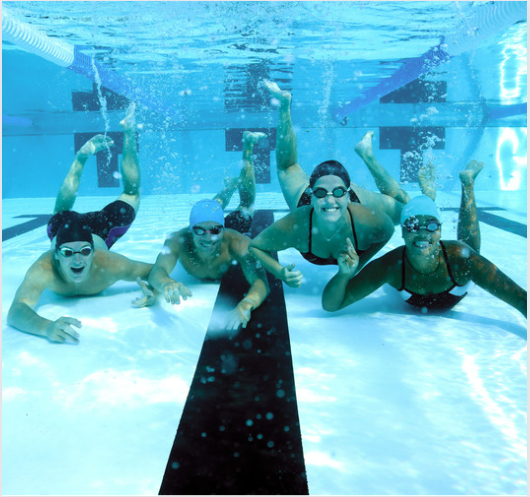The Science Behind Swim Caps
Swim Apparel, Swim Gear
|
May 19, 2022
The Science Behind Swim Caps
Swim caps aren't just for competitive swimmers. Realistically, you should wear a swim cap every time you enter the water. People of all ages should wear a swim cap to ensure their safety and make them more visible in the water. Even when you're just taking a dip at home, wearing a cap can keep loose hair from clogging your pool and protect your hair from chlorine damage. They're not just for safety, though. Swim caps are especially beneficial for swimmers who compete in races or swim for a team because they can help reduce drag in the water. As a bonus, bright-colored caps will let your parents, coaches, and fans know where you are so they can cheer you on during your event. Whether you swim recreationally, compete for a team, or participate in triathlons, finding the right swim cap can enhance your success. Understanding swim cap science can help you decide which type of swim cap will be the right choice for you.Types of Swim Caps
There are four types of swim caps that you can find, although some of them are recommended for fitness and competitive swimming while others are not. Depending on your intended use, you might want to look into getting more than one to discover which fit you enjoy best. Types of swim cap materials:- Silicon: Silicon is by far the most durable swim cap material. These caps will last the longest and help keep your hair from breaking. They are easy to take off, and you can find dome-shaped caps with additional silicon. Dome-shaped caps have fewer wrinkles, helping to reduce drag further. These caps are great for fitness or competitive swimmers. The downside to these caps is that the material can be so smooth that they occasionally slip off your head.
- Latex: Latex swim caps have a tighter fit, and they don't budge when they're on. They can rip after a few months of consecutive use but are still great options for swimmers who compete. The material of latex swim caps is thinner, making the cap more breathable. However, you may pull your hair when taking these caps off or putting them on because of the tight fit.
- Lycra or Spandex: Lycra or spandex swim caps are more comfortable and cozy. They don't squeeze your head, and they can last for a while if you take care of them. However, they don't protect your hair from the water because they are very porous, and to keep elasticity, you need to rinse them with a chlorine neutralizing solution. These caps are not meant for fitness swimmers but are good for recreational swimmers.
- Neoprene: Neoprene swim caps consist of the same materials that make up wetsuits. These caps are perfect for swimmers who exercise in open water because they keep your head warm. They have heavy seams and thick material. You can find many endurance swimmers or triathletes who wear these when swimming in the ocean.
How Do Swim Caps Work?
Competitive swimmers first used swim caps to move faster and experience less drag. If you have long hair, you can probably attest to the pulling feeling you get when you're underwater. By holding your hair tightly in place, swim caps reduce the resistance you can experience in the water. These caps have a smooth surface that allows you to glide through the water, increasing your hydrodynamic. The best cap fits snugly and comfortably for proper usage. If your cap is too loose or tight, it may slip off or irritate your head and skin. Furthermore, a cap that doesn't fit properly can create wrinkles, which will reduce the effect of the cap in the first place.How to Put on a Swim Cap:
Properly putting a swim cap on can be challenging the first few times. It's a good idea to practice taking it off and on to ensure it fits. Here's how to put on your swim cap:- Wet your hair to reduce any pull.
- Pull your hair into a ponytail if it's long.
- Stretch out the cap.
- Line up the seam with the middle of your forehead.
- Rest the cap in the middle of your forehead.
- Pull the cap back over your head.
Advantages of Wearing a Swim Cap
There are plenty of reasons why swimmers wear swim caps. They primarily serve as a protectant and assist in speed. Regardless of why you swim, a cap can protect your hair and head and create a safer environment for all swimmers. Other benefits of wearing a swim cap include:- Keeping your hair out of your eyes and mouth
- Eliminating drag in the water from your hair
- Protecting your hair from chlorine damage
- Ensuring your goggles stay on without pulling your hair
- Providing a safety measure for other swimmers and boaters
- Keeping your head warm in cold or open waters
- Protecting pool filters from loose hair
- Eliminating the risk of hair getting caught on ropes
- Giving parents, fans, and watchers a focal point
- Reducing the amount of water that enters your ears
- Assisting in keeping earplugs in place







Leave a Comment
Your email address will not be published. Required fields are marked *